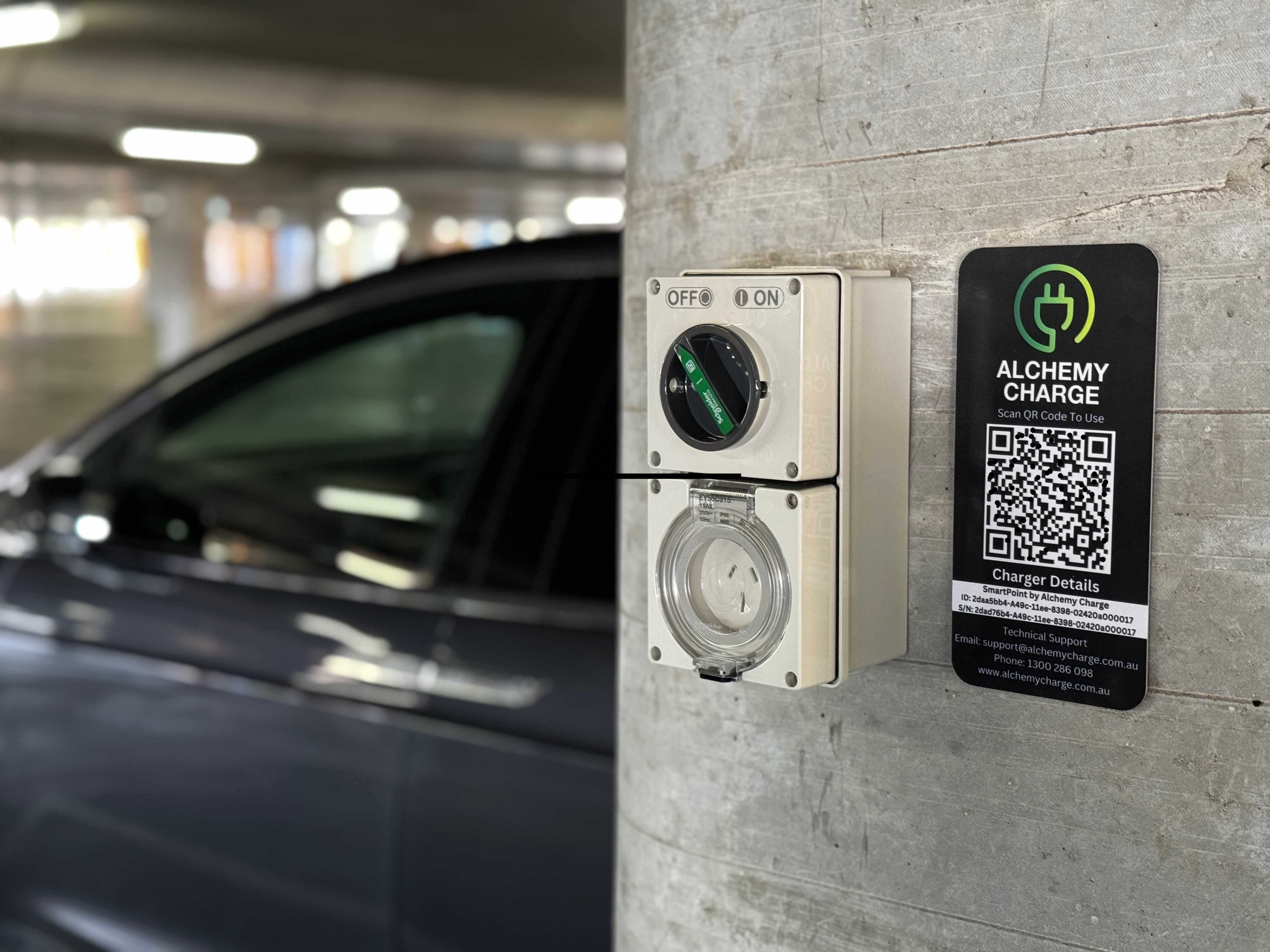The rise of electric vehicles (EVs) marks a significant shift towards more sustainable transportation. However, for many living in apartment blocks or strata complexes, the transition to electric comes with its unique set of challenges. The primary hurdle? Charging infrastructure and cost.
The Chicken and Egg Scenario
Many potential EV owners face a dilemma akin to the classic chicken and egg scenario. The hesitation to purchase an EV stems from the lack of accessible charging facilities at home. Conversely, the reluctance to install EV charging solutions in apartment blocks is often justified by the low number of EV owners. This cycle creates a barrier to the adoption of electric vehicles, especially in densely populated urban areas.
Introducing SmartPoint: The Game-Changer
SmartPoint emerges as the beacon of hope in this scenario. Designed with apartment blocks and strata complexes in mind, SmartPoint offers an efficient, affordable, and user-friendly solution to the EV charging conundrum.

Efficiency and Affordability
SmartPoint stands out as a more efficient and cost-effective solution compared to conventional charging stations. Priced at $250 including GST per unit, it offers an accessible entry point for apartment blocks looking to equip themselves with EV charging capabilities.
The SmartPoint system operates on a user-pays model, ensuring that only those utilizing the service bear the cost. This model includes a 20% commission to maintain the network, which is incorporated into the tariff paid by the user. Hosts have the flexibility to set the price, which is then increased by 20% to cover our commission. This structure allows for a monthly reconciliation to the hosts, ensuring transparency and ease of management.
Managed Queuing
In environments with multiple EVs, such as Strata complexes or car parks, SmartPoint ensures the electrical system is not overloaded. It prioritises charging based on demand and availability. For instance, if a complex can support charging 10 vehicles simultaneously without exceeding its power capacity, but there are 15 vehicles needing a charge, SmartPoint will manage the queue, ensuring the first 10 are charged efficiently and then automatically switch to the remaining 5, maintaining system integrity and fairness.
Simplicity and Future-Proofing
Installation of a SmartPoint station is as straightforward as replacing or installing a new power point, making it an attractive option for strata buildings. Its no-fuss approach extends to maintenance as well, with no ongoing upkeep required.
Moreover, SmartPoint is designed to be future-proof. It is compatible with all portable chargers provided by EV manufacturers, supporting the recommendation to use the vehicle’s own charger for optimal battery health through trickle charging. This compatibility ensures that as new models enter the market, SmartPoint remains a viable and effective charging solution.
Understanding EV Driver Behaviour
Daily Travel Habits
The average Australian EV driver travels under 38 km per day.
Charging Efficiency
With just 3 hours of trickle charging, the daily travel needs of the average EV driver are met, averaging 10-15 km per hour of charge. This efficiency underscores the practicality of EV ownership for daily commuting and errands.
Charging Preferences
In the EU, 80% of EV charging is done via trickle charge, highlighting its convenience and efficiency. The Electric Vehicle Council of Australia predicts this figure will rise to closer to 90% in Australia, reflecting a strong preference for home charging solutions like SmartPoint.
Charging an EV is akin to charging a smartphone; it's about topping up regularly rather than waiting for the battery to deplete completely. This behaviour contrasts with conventional internal combustion engine vehicles, where refuelling typically happens once a week. For EVs, extensive charging sessions are generally reserved for long road trips or fleet vehicles.

The Challenges of Installing Fast Level 2 and Level 3 Chargers in Apartments
High Infrastructure Costs
The installation of Level 2 and Level 3 chargers in apartment blocks demands a significant investment. While Level 2 chargers are less expensive than Level 3 chargers, they still require a considerable amount for charging hardware and installation. Level 3 chargers, with their advanced rapid charging technology, are notably more expensive, making them a substantial investment.
Electrical Grid Upgrades
Both Level 2 and Level 3 chargers increase the power demand on the electrical grid. This necessitates upgrades to support the higher power requirements, including enhancements to transformers and power lines. Implementing these upgrades can be both costly and time-consuming, requiring significant modifications to existing infrastructure.
Space Requirements
Installing Level 2 and Level 3 chargers comes with space considerations. Level 3 chargers, in particular, require more space due to their larger equipment size. Finding accessible and suitable locations for these chargers within apartment complexes poses a significant challenge.

Maintenance & Operational Costs
The technology behind Level 2 and Level 3 chargers, especially the latter's rapid charging capabilities, demands regular servicing. This leads to increased long-term costs due to the need for ongoing maintenance and operational support.
Energy Demand Management
The introduction of high-power charging stations, particularly Level 2 & 3 chargers, can significantly impact the local grid, especially during peak times. Managing this increased energy demand requires careful planning and additional costly infrastructure to ensure grid stability and prevent overloads.
User Experience with SmartPoint
- Installation: Hosts install as many SmartPoints as required, ideally one in every parking spot. These units are connected to the common area power if located in a Strata block.
- Dedicated QR Code: Each SmartPoint is equipped with its own dedicated QR Code for easy access.
- Access: Users can either scan the QR Code directly or download the Alchemy Charge app available for both Apple and Android devices.
- Operation: Users start and stop their charging session through the app. The amount of power used during the session is recorded.
- Payment: Users pay for their session at the rate designated by the host, plus our commission. This ensures a straightforward and transparent transaction.
- Reimbursement: The funds, minus our commission, are paid back to the host's bank account, facilitating an efficient and hassle-free process for recouping costs.

Overcoming the Hurdles
SmartPoint addresses the chicken and egg scenario head-on by providing a scalable and economically viable charging solution. Its implementation can encourage more residents to consider EV ownership, knowing that charging their vehicle at home is not just possible but convenient.
The Path Forward
The transition to electric vehicles is an essential step towards reducing our carbon footprint and fostering sustainable urban living. By adopting innovative solutions like SmartPoint, apartment blocks and strata complexes can overcome the challenges of EV charging, paving the way for a greener future.
As we move forward, the focus should not only be on making EVs more accessible but ensuring the infrastructure is in place to support this shift. SmartPoint represents a significant leap in this direction, offering a practical solution to one of the most pressing issues facing urban EV owners today.

